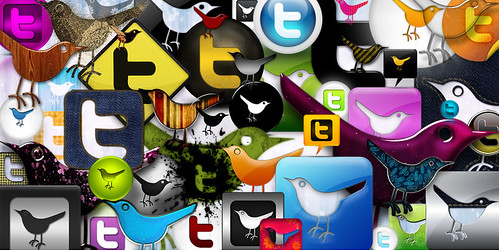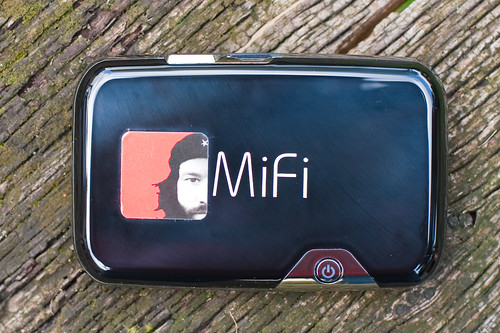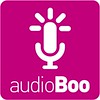“The show begins at the moment you first hear about it” @untheatre at Shift Happens June 29th 2009
“It’s critical that artists are engaged with the digital world, not just for marketing, but to ask difficult, big questions of it” @wethink at Shift Happens June 30th 2009
Audience Development
Why Social Media?
If you’re using social media properly your audience is your community, social media is about communication, and community building.
Community Building is developing your audience.
The moment you have a community, you have participants, not observers. People. Not Bums on Seats.
In the modern world of millions of people vying for your attention, it’s not your presentation; it’s your connection to your community that’s important. This is where social media comes in. Social media offers invaluable tools in accessing the hearts as well as the minds of your participants. To people bombarded every day with ‘brand’, it’s the human touch of organisations that gets your interest and loyalty. Put more simply, social media tools aren’t about you; they’re about the people you want to speak with.
Need more convincing? Here’s how social media can help you;
Complete the picture: By providing people with access to the personal and day-to-day side of your organisation, think of it as a backstage tour of your organisation.
Break down the barriers: Help to break down the perceived inaccessibility of the arts. Showing the process as well as the finished piece, means that your communities can get/feel involved in the whole artistic process. Social media allows an immediate and personal view into your company and it’s projects.
Collaborate: Social media can help you make connections to people and groups you might never have otherwise encountered, it can garner immediate responses to questions, act as an instant audience-survey, it helps you see into other people’s worlds in the same way they can access yours. It connects you to people all across the country.. all across the world.
It can help get your art ‘out there’: Social media is an active pastime, the people who get the most out of it listen as much as they speak – they participate. The personal nature of social media means that these people are more likely to actively support you and your work.
Types of social media:
So where to begin? A lot of social media can seem out of reach, confusing, or difficult at first glance. I will be offering you a basic toolkit here, of both physical kit, and social media tools, but much more important is to knock a couple of common misconceptions on the head:
- There Are No Experts
There’s just us. All of us. Learning as we go. These tools are all so new, and there’s always something else on the horizon, because of this the only way to learn how to use them is to use them yourself, become your own expert, and connect to people who know what’s coming next. Know that everyone makes mistakes, just as everyone sometimes stumbles over their words. If you are not making mistakes you are not pushing hard enough.
- This is Not a New Way of Communicating
This is just communication, through a different medium. It’s just talking. As you’d talk, laugh, and converse in real life, you do so online. Don’t try and view it as a different language, engage with it using your own. Be yourself.
There are three main types of content that you’re going to be producing in the online world:
- Front Facing
- Real-time
- Audio/video/images
Of course all of them will cross pollinate.
Front facing: Your website and your blog. Posterous, WordPress, Blogger.
Your front-facing media is the main landing page when someone searches for you – this is where you will collate the best of your social media activities, and where you will publish the more traditional marketing, event and company information. It is essential that you keep this space active, and interactive, that’s where a blog comes in.
WordPress and Blogger are popular and easy to edit blog hosts, allowing you to add widgets, post updates, allow people to subscribe to your RSS Feed and more.
Posterous is a super-simple blogging platform which allows you to post almost anything via email, meaning that they deal with all the media and other content that you want to attach.
Real-time Twitter, Facebook statuses, Twitvid, Twitpic, 12 seconds
Currently, almost all mainstream social media is geared to link up with twitter – the simple, short and easy way of sharing your real-time exploits online.
Twitter is your main tool with regards to immediacy, and behind the scenes access to your community. For an in depth guide to why you should be using twitter, along with a guide to the jargon, programs and different tones you can cultivate, have a look at Hannah Nicklin’s guide to Twitter for Arts Organisations, on the Get AmbITion website.
What can be a little more challenging as an organisation new to Twitter is cultivating your presence and community, before you have people to talk to you will be tweeting into what feels like the dark, and you need to make sure you don’t fall into the bad habit of only pushing front facing style communication. Keep talking to people, asking questions, and sharing other people’s information as much as possible.
Facebook statuses can be used in a similar way to twitter, although try not to replicate information, you want people to feel as though they’re discovering more about you as they explore your digital footprint, not digging up all of the same information.
TwitPic and Twitvid are very simple ways of uploading images and video and sharing them via twitter – you can access them online, or via mobile devices and twitter clients. Bringing a visual face to your real-time action is really important in how accessible you appear. It doesn’t always have to be about the art however, you can take pictures of the mountains of envelopes you have to seal, or a wonderful prop or piece of scenery that has showed up. Again, it’s all about the taste of your content, and the behind the scenes feel, to which these two tools can contribute (NB there are other platforms, but these are the most widely used)
12 Seconds will also auto-tweet, and in ways is a video version of Twitter, allowing you to send 12 second videos out to the world. This is great for snap shots into a working day or general process. You can post by email, online, or mobile applications.
Audio/video/images Flickr, Youtube, Audioboo.
Flickr and Youtube allow you to share images and videos; it lets you ‘tag’ media, meaning that it will be easily found in google searches, and offers the ability to embed elsewhere online.
Audioboo is an instant podcasting solution currently available to iPhones, iPod Touches and android devices. It will soon be browser based too. Posting to Audioboo you are able to add a location tag, picture, and immediately host a piece of audio. The audio will be auto-tweeted, and can be downloaded/subscribed to via iTunes from the Audioboo site. Audioboo is a brilliant way to keep people updates when you are short on time, and a less intrusive tool for interviewing people.
Other:
Eventbrite allows you to create ‘events’ and share them online – you can charge for tickets (thought you don’t have to), provide links, information and maps, as well as enabling people to instantly download the information to their chosen calendar (outlook or ical usually) This is a great way of disseminating event information far and wide. Also check out the more succinct Tweetvite which works in much the same way for smaller non-ticketed events.
BASIC KIT RECOMMENDATIONS:
There is much more on the market which will help you interact with your online community, but these are the basic physical tools which will enable you to do all of the above.
An iPod Touch, (plus mic) –roughly £140 this will open the door to true real-time interaction, allowing you access to Twitter clients, audioboo, mobile browsing, email-blog posting and more
A Canon Ixus 120 IS– roughly £180 this will do great HD video, and high quality images. The camera is compact, robust and easy to use.
A MiFi free on some contracts a personal wireless hotspot, utilising 3G networks, this allows you to turn the iPod Touch into an almost replicate of the iPhone, meaning you will be able to tweet, Audioboo, browse and email blog entries almost anywhere.
Case Study
This is a case study for a small company, with actions for an Artistic Director, and a General Manager/Administrator. The more people who are feeding content into your streams the better (though if more than 2 people tweet from an account, consider personal ones that are re-tweeted by a main one, or signing tweets with your initials)
SOCIAL MEDIA TOOLS – how and when to use
Most of these tools link to and auto-update a twitter account, if they don’t, always, always tweet about it. That is the feed that people are most likely to stumble upon and should be the backbone for your media.
Everyday use
Tools: Twitter, WordPress, Twitpic, Flickr, Facebook, 12seconds, Audioboo
ARTISTIC DIRECTOR
TWITTER: 3 x 15 mins interaction, a few tweets a week – general observations an RTs to start, replying to any @ replies, listening and building up.
WORDPRESS: one blog entry a month, a short Artistic Director update
12 SECONDS – Download the app to your iPhone for free – record any video and it will take the first 12 seconds and tweet it to your chosen twitter account. Quick snapshots of scenery, theatres, comment, sets, offices, weather, anything.
AUDIOBOO – try audioboo reviews of shows you see. Very simple program.
GENERAL MANAGER
TWITTER:cultivate personal account, and tweet at least once a day from the 7 categories, try one before lunch break, and then reply to any responses when you’re back, simple and allows for conversation.
WORDPRESS: two blog entries a month – and/or co-ordinating at least two guest blogs
FACEBOOK: when you put out an opportunities, also put the link on the Facebook page, and link people to it via twitter.
FLICKR: use for high quality, front-facing images.
When an event is upcoming
Tools: Posterous, Eventbrite, Facebook, WordPress, Twitter, Youtube
ARTISTIC DIRECTOR
WORDPRESS: More formal blog RE the artistic outlook of the event.
GENERAL MANAGER
POSTEROUS – Use for more immediate things in lead up, collections of photos, video, audio trails, push it to the WordPress.
WORDPRESS: Get artists involved to guest blog about the process
YOUTUBE: Cut together a really simple video, just audio and photo stills if necc, post to Facebook, Posterous, Blog, Youtube. People are much more likely to watch something than read about it.
EVENTBRITE – Create an online event that you can link across all social media, tweet it.
TWITTER: Decide on a hashtag, the shorter the better. Offer discounts over Twitter. Link to every bit of buzz – this is your aggregator
FACEBOOK – Make an event, offer discounts, add videos and pictures.
When an event is happening
Tools: Twitpic, Twitvid, Audioboo, Twitter, Posterous, Flickr, 12Seconds, WordPress
ARTISTIC DIRECTOR:
AUDIOBOO: Interview vox pops with participants and performers, record your own reactions, or take short clips of dialogue/monologue or sound/music.
TWITPIC/VID: Tweet pictures and videos of the event.
12SECONDS: 12 second snippets of the action, one word summing up of the event from people
GENERAL MANAGER:
POSTEROUS: Take all quick content and email it in as it comes- this is your substitute for twitpic/twitvid
FLICKR: Take as many photos as possible, the more you take the better the chance of some good ones. Be ruthless in the edit. Post the best.
TWITVID/YOUTUBE: Use a digital camera to take slightly longer interviews and post in the evening/day after. Keep it simple to avoid the need to edit.
WORDPRESS: Summing up blog with a choice picture and video/audio
TWITTER: Tweet everything!
And finally, a few last tips regarding social media:
- Be polite – say hello to new participants, or people you’re interested in, thank people for links and recommendations.
- Listen – Social media is all about being sociable. Listen to people, interact with them.
- Inform – link to useful and interesting information, be it software, articles or news items you come across.
- Credit, link and promote others – Never appropriate, always acknowledge people, it will make them more likely to disseminate your content too. Share the link-love.
- Don’t spam – By all means promote your art, but don’t spam – make it genuine, exciting and relevant and try not to repeat yourself.
- Be funny – Don’t try too hard but sometimes the best way to catch someone’s fleeting interest is to make them smile.
- Be human – Not always obvious but very important, being a “real” person, rather than a representative is important. Balance it. People talk to people..
- Have fun! It really is a wonderful world to be a part of, get involved.
Glossary:
Blog – originally known as a Web Log – it’s an online and public space for writing, thoughts and reflection, normally allowing comments from others.
Post / update – an entry on a blog, social media platform or website.
Micro-Blog/ging – micro-blogging describes the phenomenon ofsites such as Twitter – blogging done on a micro, mobile scale. Originally based on the 160 characters allotted to a text message.
Twitter – a quick and easy way of sending ‘status updates’ – small pieces of text up to 140 characters long – about what you are thinking, doing, or a link to news and information.
Tweet – a single status update on twitter
HashTags (# + keyword ie #getambition) – are a community-driven method for adding metadata to tweets. When used, every hashtag (the hash symbol attached to the front of a keyword) becomes a click-able link enabling the user to create a real-time search of that keyword effectively creating groupings without changing the basic twitter service.
Re-Tweet/ed (RT) – when someone re-posts one of your tweets (linking to you in doing so) because they have appreciated what you’ve said enough to want to show their followers in their network.
Auto-Tweet – when an application or program automatically sends a tweet to your twitter account when you update said application or program. For example whenever you post to Posterous, you can set it to send a tweet with the title, and a link to the blog post.
RSS Feed – allow people to subscribe to the content posted on a social media platform or blog. (Really Simple Syndication (See Wikipedia))
Feed / Stream – colloquially (online) these both refer to a series of entries in an online space – i.e. a person’s twitter stream consists of their status updates, and a Flickr stream would consist of a person’s uploaded pictures.
Widget – a small add on to a web page or blog, most social media platforms provide you with widgets, showing your most recent updates.
Embed – to take a piece of media hosted elsewhere (youtube, flickr etc) and to share it on another web page or blog. Quite often a ‘share’ button will offer you embed code – this should be cut & pasted into the html edit section of a blog or website, or can be emailed directly in to Posterous.
Tag – Basic labels for your content (usually comma-separated)– you might shoot a video for youtube of a performance.. Tag it -‘theatre, performance, YOUR THEATRE COMPANY, YOUR SHOW TITLE’
Podcast/ing – Subscribe-able audio broadcasts online.


























